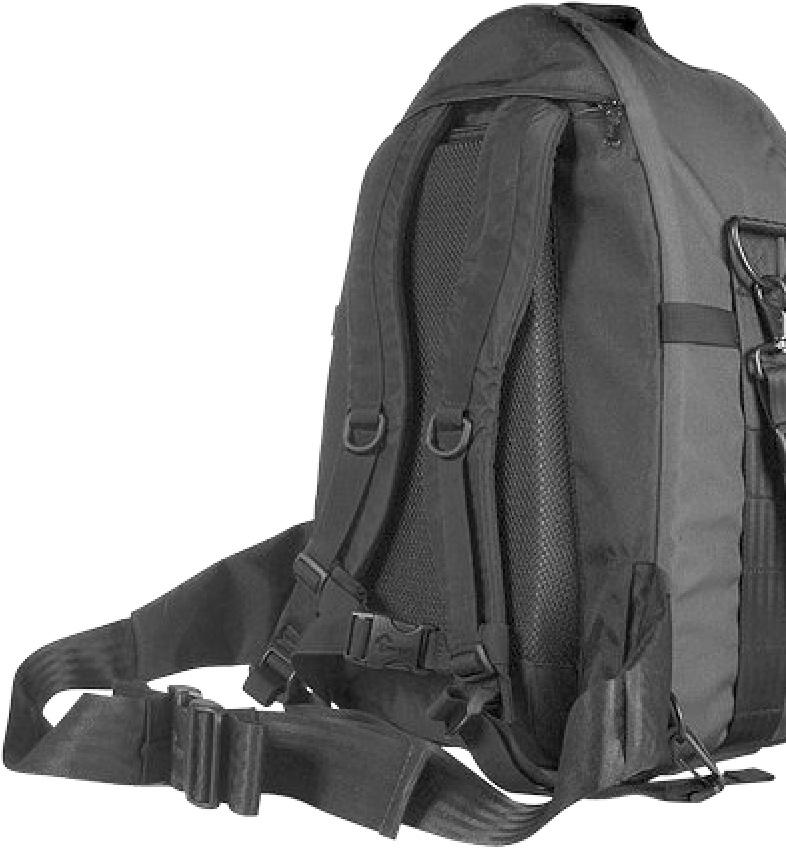
13 minute read
About Lateral Thinking
About Lateral Thinking Puzzles
Sample ◆ What is “Lateral Thinking”? Lateral thinking is a term coined by Edward de Bono to describe the solution of problems through creative and indirect thinking. Literally, the word lateral means of or related to the side. Lateral thinking puzzles involve situations with some kind of twist or unexpected outcome, and fnding the answer requires people to break out of the usual predictable patterns of thought. ◆ How can we solve the puzzles? By asking questions—lots and lots of questions! In this way, you can get information and, little by little, fnd the answer. It’s a great way to practise the various question patterns. Remember, grammar and communication go hand in hand. The more you understand the grammar of the questions, the better you can communicate your ideas. ◆ Any more advice? 1. Make sure you understand the diferences between nouns, verbs, adjectives, and adverbs. This is important. 2. Use your imagination. There’s no such thing as a stupid question! 3. Try to use complete sentences for these questions. It’s good practice. 4. Remember, you can ask for the same information in a variety of ways. (paraphrasing is a very important skill): • Does he own the car? • Has he borrowed the car? • Is the car his? Sample • Is he the owner of the car? • Is he the car’s owner? • Is it his car?
Unit 1: Introduction

Each unit has seven sections. This unit explains how they work. 1. Mystery (Lateral Thinking) Puzzle 2. Speed Questions 3. Communication Tip 4. Communication Activity 5. Just a Minute! 6. Keep It Going 7. Crossword Challenge 1. Mystery Puzzles THE BROTHERS IN THE BAR Twin brothers meet for a drink. Each drinks a glass of whisky. One drinks his quickly, the other drinks slowly. The brother who drinks slowly, dies. Why? WHY MYSTERY PUZZLES? Asking questions is a basic and important part of communication. This activity helps you practise making simple “Yes/No” questions in a fun and challenging way. The puzzles also help you think more critically and creatively. HOW DO WE DO THEM? At the end of the class, you’ll be given a scenario. Before the next class, prepare 25 Yes / No questions. In class, ask these to your group leader to get more information about the scenario. Here’s an example.Sample Example questions: 1. Are the brothers adults? (Yes, they are.) 2. Does the brother who died have a health problem? (No, he doesn’t.) 3. Does the surviving brother fnish his drink? (Yes, he does.) 4. Are they in a bar? (Irrelevant) 5. Is the type of drink important? (No it isn’t.) 6. …
Your group leader can only give short answers, e.g., Yes, (they did) / No, (it wasn’t) / Irrelevant (not important). Your group should keep asking questions to get more information. Question by question, as you eliminate possibilities, you’ll fnd the answer to the puzzle. Sample 1. 2. 3. 4. 5. 6. 7. 8. THE ISLAND PRISONER A man is a prisoner on an island, surrounded by a large, deep lake. There is no bridge. There are no boats on the island, and the man cannot swim. But he escapes from the island and reaches the mainland. How did he cross the lake? Did he have a plane? Did he have a rubber ring? Did he use a jet ski? Could he see the mainland from the island? Did he escape at night? Was it difcult to cross the water? Is the man’s job important? Did he use some kind of machine to escape? 9. Did he steal a boat? 10. Did someone help him? 11. Is there a bridge to the mainland? 12. Were there any secret tunnels on the island? 13. Was his escape very difcult? 14. Is the island’s size important? 15. Was he young? 16. Could he fy a plane? Let’s try another puzzle. Some questions have been provided for you. Ask your teacher the questions and try to work out how the man escaped. AFTER THE PUZZLE When you’ve found the answer, practise asking and Sample answering the questions with your partner. When you ask the questions, try to look at your partner, not at the book. When you answer the questions, don’t look at the book.

2. Speed Questions
WHY DO SPEED QUESTIONS? In conversation, we take turns to speak, one person following another. We may hesitate, “Umm …” or make thinking 1. 2. 3. 4. 5. What are you going to do this weekend? How are you feeling right now? How long does it take you to come to class? Do you live near here? Where’s your favourite place in your hometown? 6. Where did you go to primary school? 7. Do you have a job? 8. What’s your favourite dish? 9. Are you good at remembering people’s names? 10. When’s your birthday? noises or start with “Well, …” or similar, but there is usually almost no silence between turns. Silence can be stressful—it makes many English speakers feel uncomfortable. This activity helps you respond quickly and build fuency. HOW DO WE DO THEM? Find a partner and stand up. Answer your partner’s questions as quickly as possible. Add a short (second) comment with each answer. When you have completed all ten questions, switch roles. When you have both completed the questions, sit down.Sample


3. & 4. Communication Tips & Communication Activities
WHY ARE WE GETTING THESE TIPS? These tips will give you useful advice about how to communicate successfully. Remember! Communication will not stop Sample ◆ Communication Tip – Just The Basics Research shows that you do not need a huge amount of grammar to communicate successfully. But you need to know: • how to form basic questions • simple verb tense forms, past and present • basic conjunctions (but, so, and, because) • modal verbs (can, could, may, might, will, would, should, etc.) • “pointing” words (now, then, here, there, this, that, etc.) if you make one or two mistakes. Native speakers also make mistakes, but we forgive these mistakes because communication is more important. Most people are patient with non-native language speakers, and communication will not break down if your skill in one area (e.g., intonation or fllers) is poor. But if your communication is poor in many areas, it will slowly become more difcult and less fun to communicate with you. HOW DO WE DO THE ACTIVITY? After getting advice about how to communicate better, the communication activity will give you a chance to practise. This will help you become a more natural, fuent speaker of English. Sample
Unit 1
◆ Communication Activity – Using the most common modal verbs
Not all questions are easy to ask, and not all suggestions are easy to make.
Sometimes we need to make our questions or suggestions less direct. To do this, we often use modal verbs—can, could, may, might. They are all very similar in their meaning, but can is a little more casual, and might is a little more formal. Could is in the middle and is useful in most cases. • Might I ask how old you are? • May I ask where you bought your shoes? • Could I ask if you live near here? • Could you tell me about your hometown? • Can I ask what time you usually go to bed? • Can you tell me about your high school? Ask and answer these questions with your partner and make some more of your own—but not too private or personal! 5. Just a Minute! WHY DO “JUST A MINUTE!”? It can be tiring to speak a second language, so it’s important to build up your stamina. This activity helps you practise speaking for longer turns in a more natural and fuent way. HOW DO WE DO IT? Choose a topic and talk to your group for one minute without using notes or reading. One member of your group will time you. Try to speak smoothly, without silences. Use fllers, such as: a bit erm / uhm I mean kind of like right so sort of well yeah you know (y’know) Sample
Even if you don’t have a good answer, e.g.,
A. Tell us about what fruit you ate this week.
B. I didn’t eat any fruit this week.
you should keep talking! In this case, talk about what fruit you like or dislike or why you don’t eat much fruit—anything at all!
When each member of your group has spoken for just a minute, you’ll have some free time to ask each other questions. For example: • I wanted to ask you … Who did you visit Paris with? • You said you broke your leg. Did you cry? Sample WHY ARE WE DOING THIS? It gives you the opportunity to use your imagination. It’s a fuency activity that invites you to be creative, asking and answering questions with your partner about a wide range of interesting images. Choose a topic and talk to your group for one minute. One member of your group will time you. Try to speak smoothly, without silences. Use fllers to help with this. Tell us about... • a book you’re reading now • an old school friend • something you’re good at • who you are closest to in your family 6. Keep It Going... Look at the picture below. Take it in turns to create a story by asking and answering questions about it. Ask at least three questions each. They can be about the past, present, or future, and about things you can see or imagine, e.g., If this activity is difcult for you, why not prepare your talk before class? A. I’m going to talk about … (something I’m good at). B. Great! Tell us about … (something you’re good at). • How old is he? • Where is he? • What is he holding? Sample • Why... ? • What... ? • When... ? • How... ? • Who... ?

7. Crossword Challenges
WHY DO WE HAVE A CROSSWORD CHALLENGE? The mystery puzzles help you practise Yes / No questions. These are important, but so are questions that start with Which? What? Where? When? Why? Whose? How? The Crossword Challenge helps you practise the common patterns used with these questions, while also quizzing your general knowledge. Of course, it’s important to memorize the questions before you do the Challenge in class. HOW DO WE DO THE CHALLENGE? Complete the crossword before class and memorize the questions. In class, fnd a partner and decide who will be Across (Partner A) and Down (Partner B). Partner A should say the answer to one of the Across questions. Partner B should say the question. For example: Tokyo. What’s the capital city of Japan? Do this fve times. Then Partner B should say the answer to one of the Down questions, and Partner A should make the question. Do this fve times. When you make the questions, don’t look at the book. Your teacher will give you 5 minutes to make a total of ten answer/question combinations.Sample
3 1
Unit 0
2
4

Sample ACROSS 1. What shape is a three-day moon? It’s a ________ shape. 4. How many years are there in a century? 5. What does the “H” in WHO stand for? 7. What do we call a building where things are made? 9. How do you say “merci” in English? (5, 3) DOWN 1. What’s the biggest city on New Zealand’s South Island? 2. What’s “Co.” short for? 3. How do you spell “theater” in British English? 5 6 87 9 Sample 6. What does the “cent” in century and centipede mean? 7. What does the “F” in UNICEF stand for? 8. What does the “O” in H2O stand for?

Unit 2

◆1. 2. 3. 4. 5. 6. Puzzle: The Dead Man in the Field A man is lying in a feld. He is dead. There are no other people near him. He is wearing a backpack. What happened? Rearrange the words to make questions. money backpack is any the there in ____________________________________________________________ him there are people other any near ____________________________________________________________ have he did enemies any ____________________________________________________________ vegetables there feld the are in any ____________________________________________________________ someone he murdered by was ____________________________________________________________ Match the question head to the tail. Is there any death accidental? Sample 7. Is the backpack blood on his body? 8. Did anyone young?
9. Was his see him die?
10. Was he empty?
◆ Puzzle
Complete the question heads. Sample 11. ____________________________________ in the backpack? 12. ____________________________________ cold? 13. ____________________________________ doing some kind of sport? 14. ____________________________________ any money in his pocket? 15. ____________________________________ die accidentally? Complete the question tails. 16. Was the man _______________________________________________________ ? 17. Did he die __________________________________________________________ ? 18. Are there any _______________________________________________________ ? 19. Was he a ___________________________________________________________ ? 20. Is there something __________________________________________________ ? Now make your own questions. 21. ___________________________________________________________________ 22. ___________________________________________________________________ 23. ___________________________________________________________________ Sample 24. ___________________________________________________________________ 25. ___________________________________________________________________
◆ Speed Questions

Find a partner and stand up. Answer your partner’s questions as quickly as possible. Add a short comment to each answer. When you have completed all ten questions, switch roles. When you have both fnished, sit down. 1. Are you a positive person? 2. Are you good at art? 3. Do you have any pets? 4. Do you think English is useful? 5. How do you feel about uniforms? 6. What did you have for breakfast? 7. What kind of movies do you like? 8. Can you drive? 9. Where would you like to work after you graduate? 10. Would you like to change your lifestyle in any way? A lot of questions, especially in this book, are not about getting information but about how we get to know each other and become friends. If you use short answers like “No.” / “Yes, I am” twice or more, the communication will probably break down. Once or twice is okay, but a second or third time says “I don’t want to talk with you. I don’t want to be friendly.” So, instead of saying … A. How was your holiday? B. It was OK. try to say more! Just like a smile, it’s a way of showing that you’re happy to be talking together. Show your partner that you want to talk with them, give more information. A. How was your holiday? Communication Tip — Not Just “Yes” And “No” Sample
B. It was OK, thanks. I didn’t do much; I just met some friends, and went shopping with my sister. But it was nice to relax. Some parts of a longer response feeling thanks general answer info 1 info 2 personal really (good) thanks I didn’t do much met friends shopping with my sister
◆ Communication Activity – How Rude!
Step 1. Be rude!
Just say “Yes” or “No” to each of the questions below. You can smile or use Sample special intonation and your answers will still be rude. Enjoy! At the cinema: • Have you got your ticket yet? • Do you want to get some popcorn or something? • Are you ready to go in? • Did you enjoy the movie? • Did you like the actors? • Shall we go for a cofee? Step 2. Don’t be rude! Ask and answer the questions again. This time, give a longer answer to each question and, with your partner, continue the conversation a little. Smiling usually helps! Step 3. Look at the example in the Communication Tip again. Use these questions to make longer, friendlier conversations with your partner(s). • How was your weekend? • Do you have any plans for next weekend? • Do you like this class? • Do you cook at all? Ask and answer these questions with your partner and make some more of your own—but not too private or personal! Sample
Unit 2




